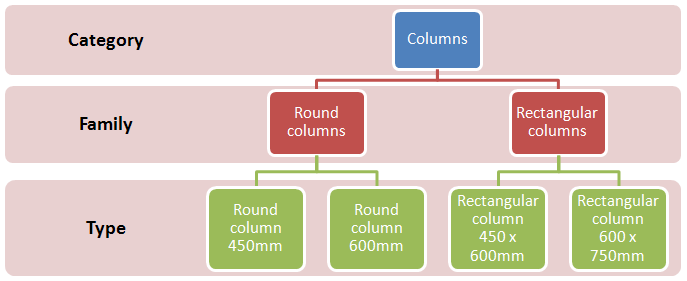 Revit Architecture
Revit Architecture Revit Structure
Revit Structure Revit MEP
Revit MEP
 Revit Architecture
Revit Architecture Revit Structure
Revit Structure Revit MEP
Revit MEPMost of the terms used to identify objects in Revit are common, industry-standard terms. However, some terms are unique to Revit. Understanding the following terms is crucial to understanding the software.
In Revit, the project is the single database of information for your design—the building information model. The project file contains all information for the building design, from geometry to construction data. This information includes components used to design the model, views of the project, and drawings of the design. By using a single project file, Revit makes it easy for you to alter the design and have changes reflected in all associated areas (plan views, elevation views, section views, schedules, and so forth). Having only one file to track also makes it easier to manage the project.
Levels are infinite horizontal planes that act as a reference for level-hosted elements, such as roofs, floors, and ceilings. Most often, you use levels to define a vertical height or story within a building. You create a level for each known story or other needed reference of the building; for example, first floor, top of wall, or bottom of foundation. To place levels, you must be in a section or elevation view.

The following image shows a Level 2 work plane cutting through the 3D view, and the corresponding floor plan next to it.





When creating a project, you add parametric building elements to the design. Revit classifies elements by categories, families, and types.

A category is a group of elements that you use to model or document a building design.
Examples


Families are classes of elements in a category. A family groups elements with a common set of parameters (properties), identical use, and similar graphical representation. Different elements in a family may have different values for some or all properties, but the set of properties—their names and meaning—is the same.
Examples


Revit uses the following kinds of families:
Examples


Because in-place elements are intended for limited use in a project, each in-place family contains only a single type. You can create multiple in-place families in your projects, and you can place copies of the same in-place element in your projects. Unlike system and standard component families, you cannot duplicate in-place family types to create multiple types.
Each family can have several types. A type can be a specific size of a family, such as a 30” X 42” or A0 title block. A type can also be a style, such as default aligned or default angular style for dimensions.
Instances are the actual items (individual elements) that are placed in the project and have specific locations in the building (model instances) or on a drawing sheet (annotation instances).